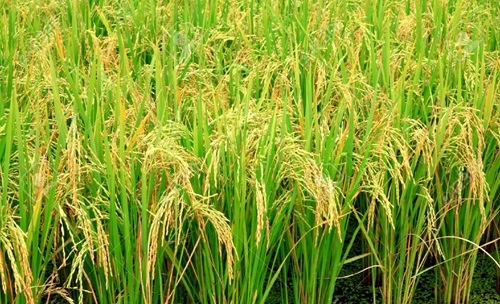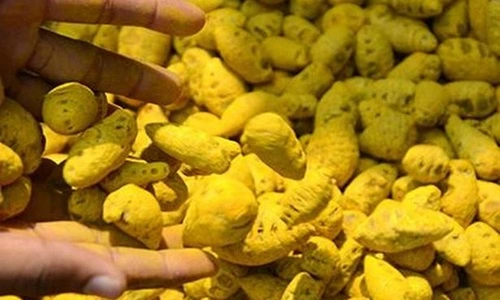Paddy, the staple food crop of India, forms the backbone of the country’s agricultural economy. India is the second-largest producer of rice globally, feeding millions and contributing significantly to exports. With diverse climatic zones and agro-ecological regions, India grows numerous paddy varieties to meet the requirements of food security, quality rice production, and the export market.
Paddy varieties in India are broadly categorized as high-yielding varieties (HYVs), hybrid varieties, Basmati varieties, and specialty rice. These varieties are tailored for different conditions, including lowlands, uplands, irrigated areas, drought-prone regions, and saline soils.
In this article, we discuss more than 10 top paddy varieties in India, their key features, regions of cultivation, and importance for farmers.

1. Basmati 1121
Basmati 1121 is one of the most popular aromatic rice varieties in India, well-known for its long grain and fragrance.
- Grain Type: Long-grain, aromatic
- Maturity: 120–145 days
- Regions: Punjab, Haryana, Uttar Pradesh, Uttarakhand
- Characteristics:
- Extra-long slender grains (up to 8.4 mm in length)
- High export value and strong aroma
- Suitable for irrigated areas
- Uses: Premium basmati rice, export, biryani preparation
2. IR 64
IR 64 is a widely grown high-yielding variety due to its adaptability and short duration.
- Grain Type: Medium-grain
- Maturity: 110–120 days
- Regions: Andhra Pradesh, Tamil Nadu, Telangana, Odisha
- Characteristics:
- Short-duration variety suitable for multiple cropping
- Tolerant to salinity and drought
- High yield potential
- Uses: Domestic consumption, parboiled rice
3. Swarna (MTU 7029)
Swarna is one of the most popular medium-grain non-basmati rice varieties in India.
- Grain Type: Medium-grain
- Maturity: 130–135 days
- Regions: West Bengal, Bihar, Odisha, Andhra Pradesh
- Characteristics:
- High resistance to diseases like blast
- High yield and widely adaptable to rainfed lowlands
- Uses: Domestic markets, affordable rice for daily consumption
4. Pusa Basmati 1509
Pusa Basmati 1509 is a short-duration aromatic rice variety preferred for its high yield and premium quality.
- Grain Type: Long-grain, aromatic
- Maturity: 115–125 days
- Regions: Punjab, Haryana, Uttar Pradesh
- Characteristics:
- High milling recovery and strong aroma
- Requires less water compared to traditional basmati varieties
- Uses: Export markets, premium cooking
5. Samba Mahsuri (BPT 5204)
Samba Mahsuri is a high-quality rice variety, known for its fine grain and soft texture.
- Grain Type: Medium-slender grain
- Maturity: 135–145 days
- Regions: Andhra Pradesh, Telangana, Tamil Nadu, Karnataka
- Characteristics:
- Disease-resistant (blast-resistant version also available)
- High consumer preference due to its non-sticky nature
- Uses: Table rice, home consumption
6. CR Dhan 310
CR Dhan 310 is a high-yielding paddy variety developed for climate resilience and flood-prone areas.
- Grain Type: Medium-grain
- Maturity: 140–145 days
- Regions: Odisha, West Bengal, Assam, Bihar
- Characteristics:
- Tolerant to submergence for up to 14 days
- High-yielding variety suitable for flood-prone areas
- Uses: Food security in rainfed regions
7. Sahbhagi Dhan
Sahbhagi Dhan is a drought-tolerant paddy variety suitable for rainfed uplands.
- Grain Type: Medium-grain
- Maturity: 105–110 days
- Regions: Jharkhand, Bihar, Uttar Pradesh, Odisha
- Characteristics:
- Early maturity, suitable for rainfed upland regions
- High yield under water-scarce conditions
- Uses: Food security in drought-prone areas
8. PR 126
PR 126 is a short-duration, high-yielding non-basmati variety popular in Punjab and Haryana.
- Grain Type: Medium-grain
- Maturity: 93–95 days
- Regions: Punjab, Haryana
- Characteristics:
- Early maturing variety reduces water usage
- Suitable for Kharif cultivation
- Uses: Domestic markets, parboiled rice
9. Rajendra Bhagwati (Rajendra Sweta)
Rajendra Bhagwati is a salinity-tolerant variety suitable for coastal regions.
- Grain Type: Medium-grain
- Maturity: 130–140 days
- Regions: Coastal regions of Odisha, West Bengal, and Gujarat
- Characteristics:
- Tolerant to saline soils and water-logged areas
- High yield and good quality grains
- Uses: Cultivation in saline regions, food security
10. MTU 1010
MTU 1010, also known as Cotton Dora Sannalu, is a high-yielding and popular medium-duration variety.
- Grain Type: Medium-grain
- Maturity: 125–130 days
- Regions: Andhra Pradesh, Telangana, Tamil Nadu
- Characteristics:
- Tolerant to leaf blast and brown spot
- High productivity in irrigated areas
- Uses: Domestic consumption, processed rice
FAQs
Q1: Which paddy variety is best for export in India?
A: Basmati 1121 and Pusa Basmati 1509 are the best paddy varieties for export due to their long grains and aromatic qualities.
Q2: Which paddy variety is suitable for drought-prone regions?
A: Sahbhagi Dhan is a drought-tolerant variety ideal for rainfed upland areas.
Q3: What is the most popular paddy variety in lowland regions?
A: Swarna (MTU 7029) and CR Dhan 310 are highly suitable for rainfed and flood-prone lowlands.
Q4: Which paddy variety matures quickly?
A: PR 126 and Sahbhagi Dhan are early maturing varieties, maturing in about 93–110 days.
Q5: Which state is the largest producer of paddy in India?
A: West Bengal is the largest producer of paddy, followed by Uttar Pradesh, Punjab, and Andhra Pradesh.
Conclusion
India’s diverse climate and agricultural advancements have enabled the development of paddy varieties catering to various agro-climatic zones and challenges. From high-yielding hybrids like Pusa Basmati 1509 and IR 64 to climate-resilient varieties like Sahbhagi Dhan and CR Dhan 310, Indian farmers have access to a wide range of options. By selecting the right paddy variety, farmers can ensure higher yields, better market prices, and long-term sustainability in rice production.

